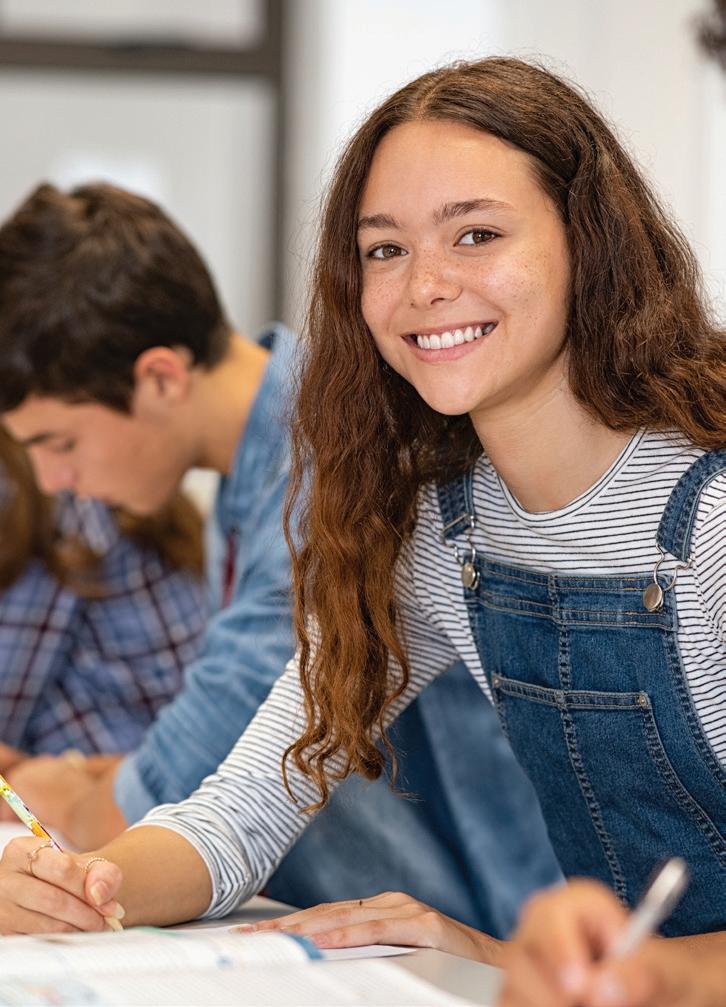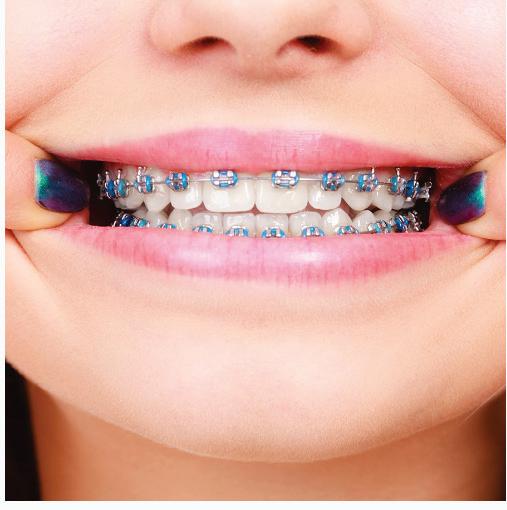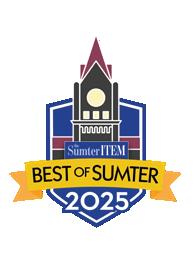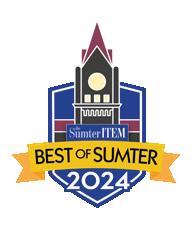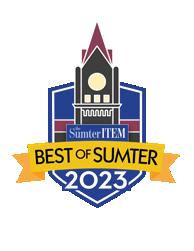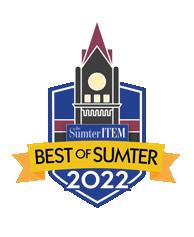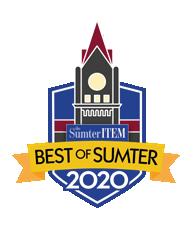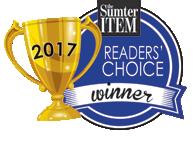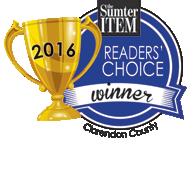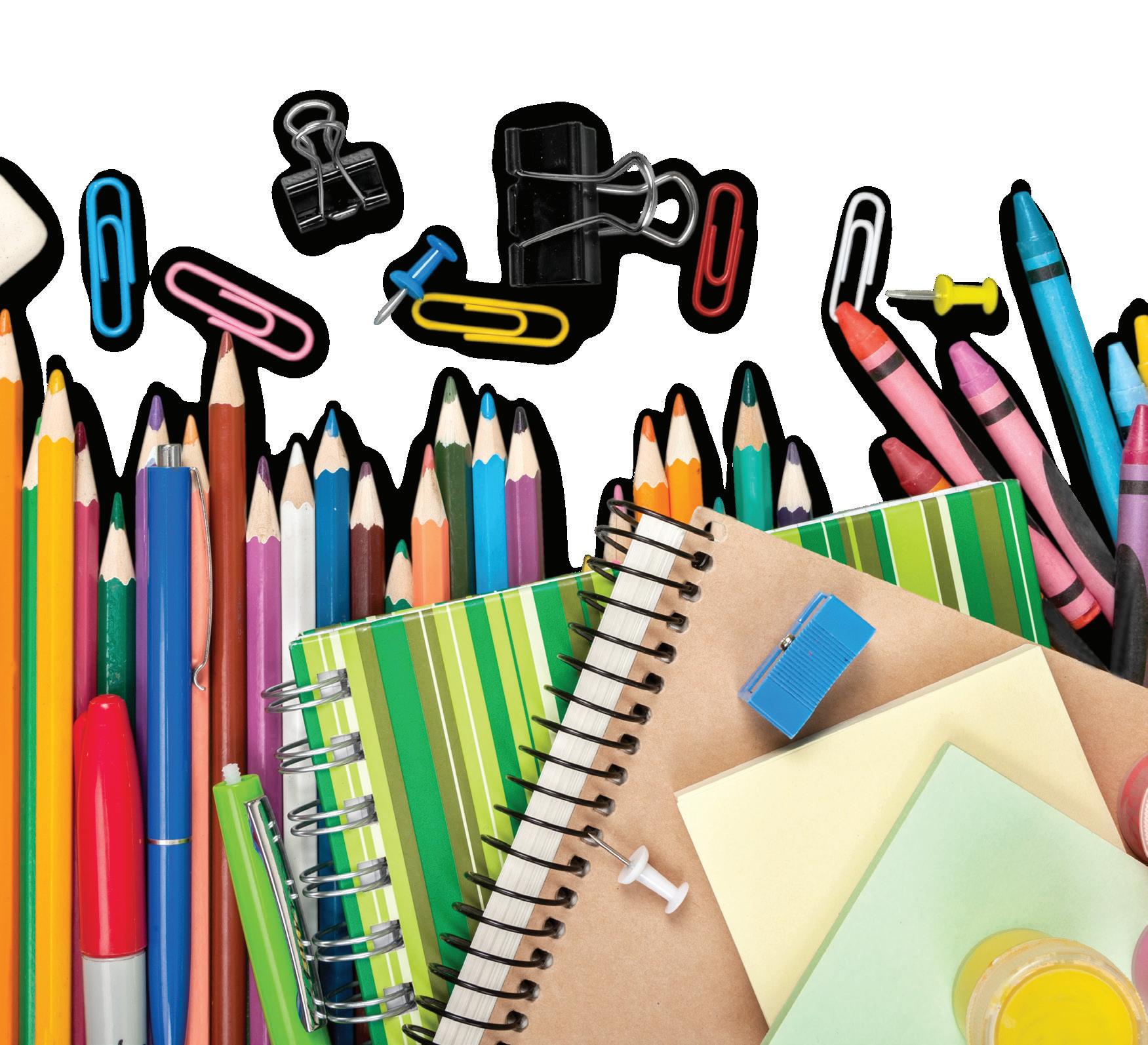

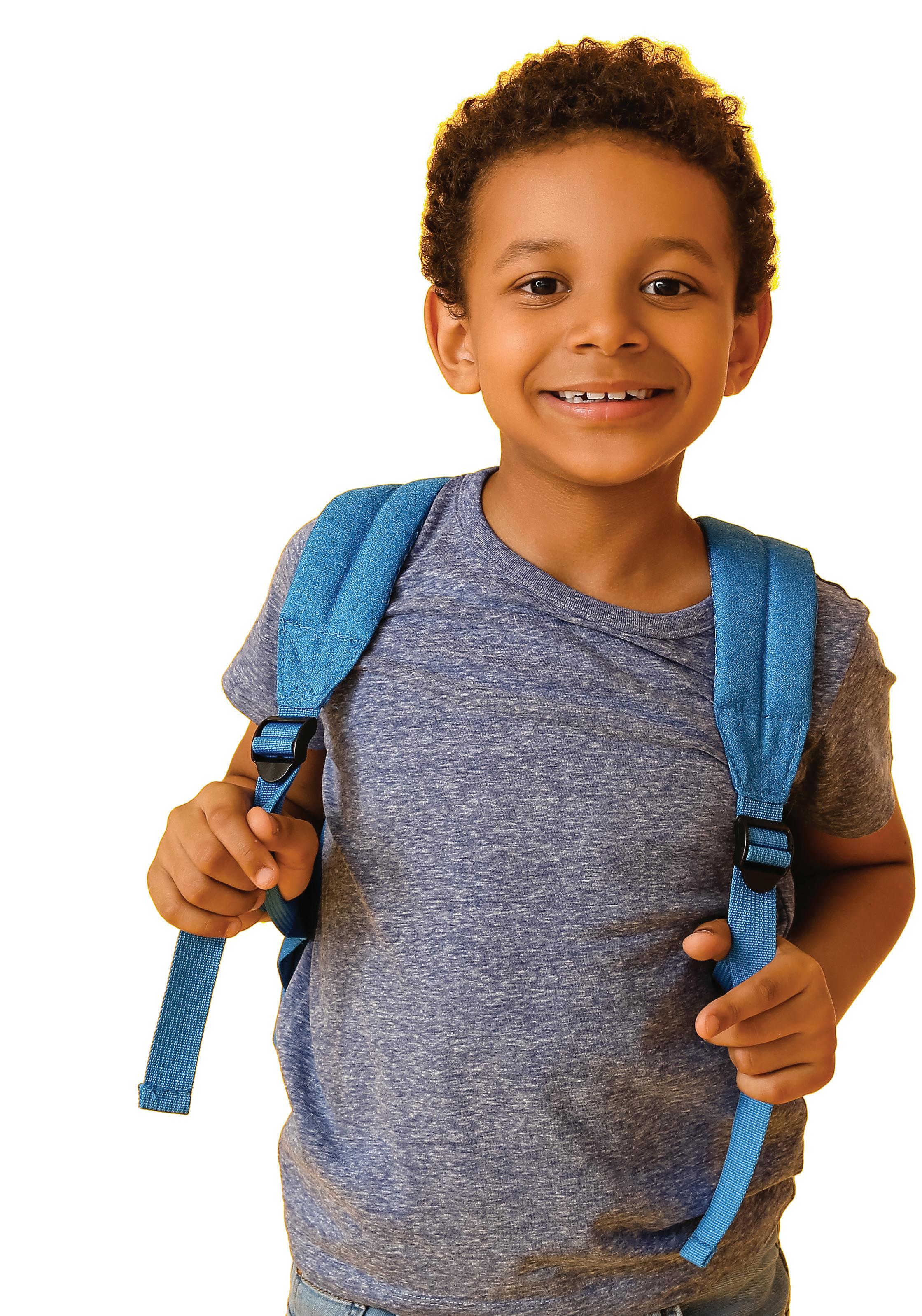





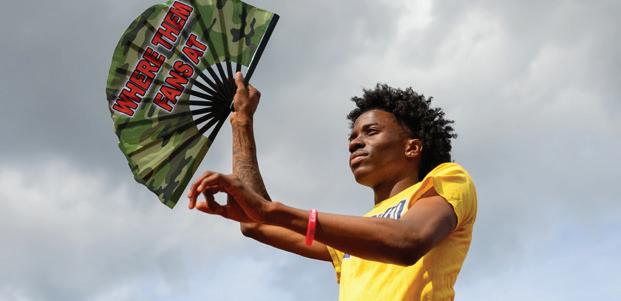




By Alaysha Maple Alaysha@theitem.com
School is almost back in session. That means back to late nights and early mornings, class projects and study sessions, and award ceremonies and triumphant stories.
And we want to celebrate them with you.
With the support of Sumter Economic Development and SumterEDGE, The Item will enter its third school term of shining a much-deserved spotlight on Sumter’s youth through its award-winning series Sumter’s Next Generation.
Launched in August 2023, this twice-monthly Wednesday series is more than just a feature. It’s a tactile means of celebrating the vibrancy, ingenuity and dedication of local students who are redefining excellence. From academics to the arts, community involvement to career readiness, this series is proof that today’s generation is ready to rise to the occasion, and Sumter is ready to cheer them on.
Since its first year, Sumter’s Next Generation has


made waves in classrooms and the community, featur ing students who are eager and earnest about being involved in their community. From future plastic surgeons getting their start in their high school art class and an Eagle Scout using free time to restore an environmental center to its eco-friendly status to a young firefighter clocking in for a night shift mere minutes after the final school bell rings and a beauty queen whose pageant walk matches her purposeful talk, these stories reflect the diversity and brilliance of Sumter’s next wave of leaders.
And it’s not just for the students themselves. This series is for their peers, showing them the power of what’s possible. It’s for the parents, teachers, mentors and loved ones who can tape these stories to their fridge, right next to those adorable stick-figure portraits. It’s for the entire community, a reminder that the future is bright and bold for Sumter with our youth at its core.
Sumter’s Next Generation includes both print and video components shared to
you know?

There is no definitive age when a child may need to get eyeglasses. However, the American Association for Pediatric Ophthalmology and Strabismus notes that

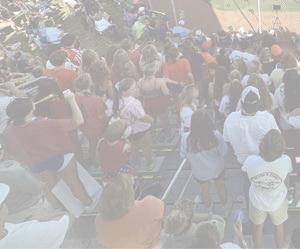

children’s visual systems are still developing during the first 12 years of their life, and during this period wearing glasses can be important for normal vision development.
The Sumter Item website and social media platforms, like Instagram and Facebook.
While the words on the page – on page A5 of the Wednesday edition – offer a tactile connection to a student’s story, the videos are meant to bring these shareable features to life and engage a younger audience on a platform they know and love.
This dynamic storytelling approach has inspired students to see themselves as part of something bigger – a community that values their contributions and cheers them on every step of the way.
Want to see these students in action? Catch the print Wednesday edition of The Sumter Item or follow along on Instagram (@sumteritem) or a Facebook (The Sumter Item) to experience the stories of Sumter’s brightest stars.
Know a student who deserves the spotlight? Submit a student to be featured at nextgen@theitem.com.
Glasses can help straighten crossed or misaligned eyes, bolster weak vision caused by differences in vision between a child’s eyes, and even protect the stronger eye. The American Academy of Pediatrics recommends children begin vision screening around age 3 and receive annual screenings each year at ages 4, 5 and 6. After that, screening is recommended when children turn 8, 10, 12, and 15. Of course, parents who begin to suspect their children are having trouble with their vision are urged to take the child to an ophthalmologist once such suspicions arise. Some notable signs include inexplicable declines in academic performance, children sitting closer to the television than they once did and children’s own remarks regarding their vision if they say anything at all.
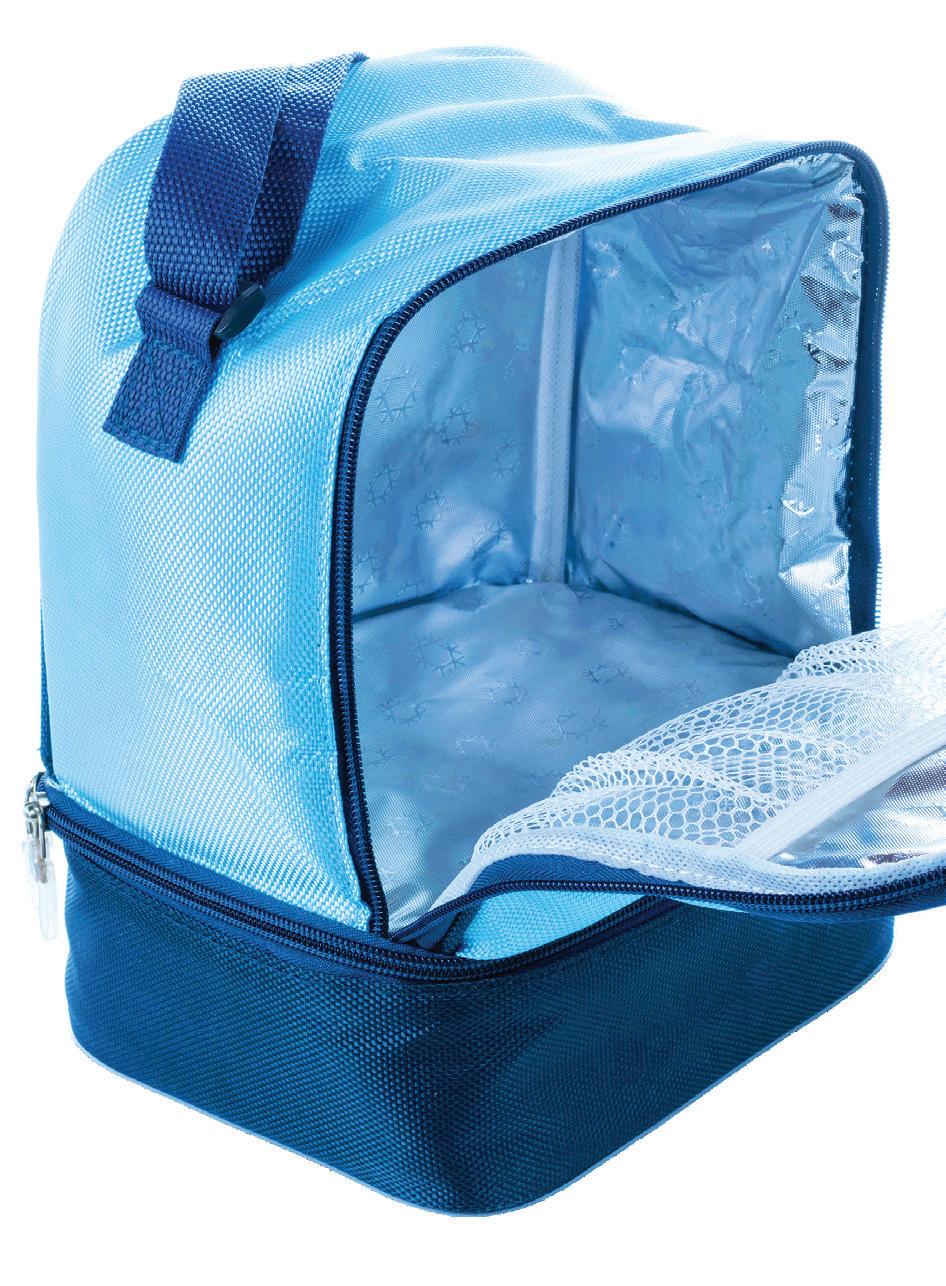
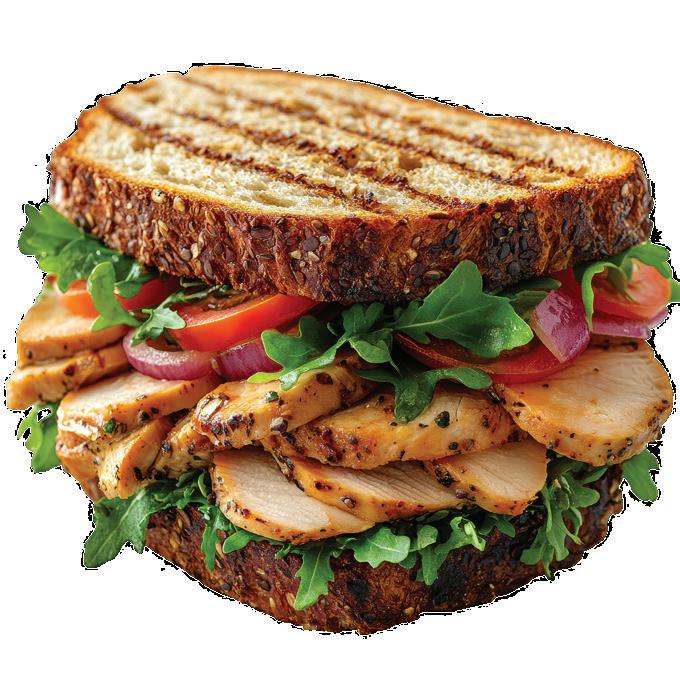
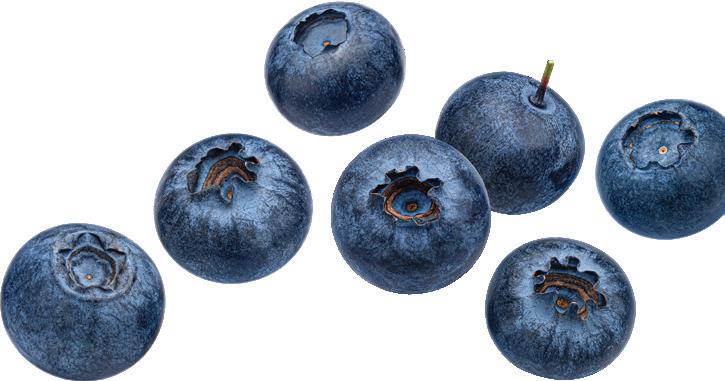
No two children are the same, but many youngsters share a number of similarities. Few young children enjoy going to bed on time, and many can’t resist a good trampoline. Kids also have a reputation for being picky eaters, which can be challenging for parents tasked with picking and preparing school lunches. When dining at home, parents know which foods their kids eat and which they push around their plates in the hopes they won’t have to consume them. School lunch is a different scenario altogether, as parents are not around to ensure their youngsters eat a full and nutritious meal. Kids who are picky eaters may not eat any lunch at all. Parents who want to ensure their children get the nutrition they need to do well in school can consider the following school lunch ideas.
• Make-your-own sandwich: Kids may be more likely to eat a full lunch if they get to put it together themselves. Parents can put all the elements of a tasty sandwich into youngsters’ lunch boxes, but let kids assemble the meal themselves. Sandwiches are not necessarily the healthiest midday meal, but they are much more nutritious when parents pack whole grain bread, tomatoes, lettuce and low-sodium deli meat in students’ lunch boxes. If a do-it-yourself sandwich is a nonstarter, consider a DIY taco lunch complete with whole grain tortillas.
• Burrito bowl: A burrito bowl with kid-friendly yet nutritious ingredients is another great school lunch option. Red beans are a good
source of fiber, and the Harvard Medical School notes all beans are rich in potassium. Fiber is filling, so a burrito bowl that includes fiber-rich ingredients, including red beans but also quinoa or brown rice, can help students avoid late-day hunger pangs that can compromise how they feel and perform in the classroom. Burrito bowls are so tasty that kids may not even realize Mom and Dad have snuck some healthy foods like vegetables into their midday meal.
• Parfait: Parfait has all the looks of a tasty dessert without the pitfalls of ice cream and other treats. The nutritional value of parfait depends on the ingredients Mom and Dad choose to include. Protein-rich Greek yogurt paired with some fruit and granola makes for a filling and tasty meal that’s also loaded with vitamins, minerals and fiber. An insulated and airtight lunch box packed with ice packs can ensure the parfait is still cool come lunchtime.
• Pasta salad: Kids tend to be especially fond of pasta, and parents can use that affinity to their advantage when planning school lunches. A whole-wheat pasta salad with some cherry tomatoes and diced broccoli makes for a nutrient-rich lunch that kids can enjoy. If broccoli figures to raise youngsters’ ire, consider a nutritious substitute, such as shaved cucumber or zucchini. School lunches can be nutritious and still make kids excited to eat their midday meal away from home.





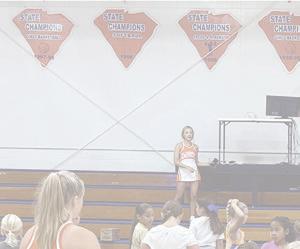
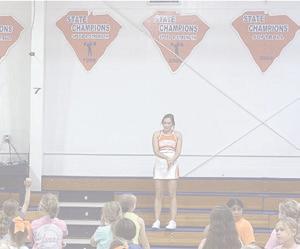
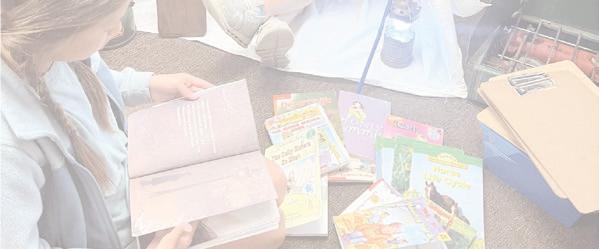
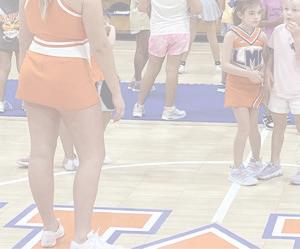
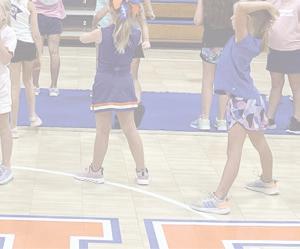
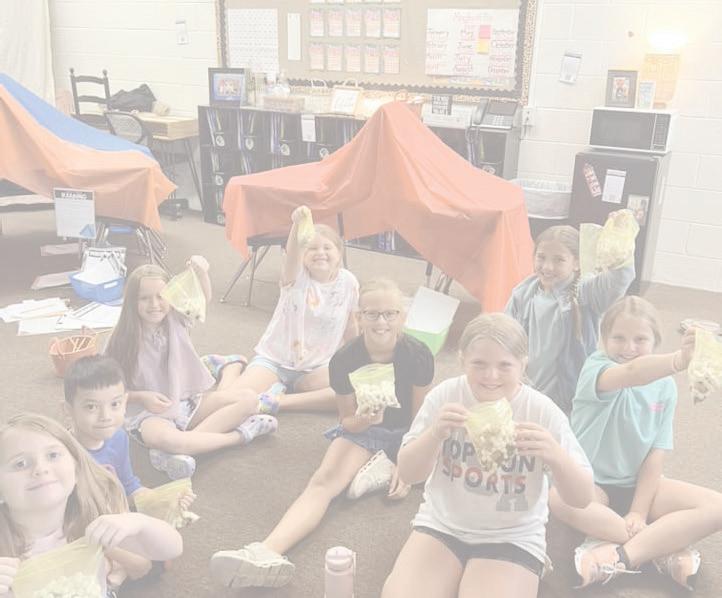

Proudly serving the Clarendon and Sumter communities since 1972, Laurence Manning Academy is a
providing students in grades K3 through 12 with a
within a safe, friendly,


School supplies, clothing, shoes and more on ‘no sales tax

BY BRUCE MILLS bruce@theitem.com
It is almost that time of year again for potentially big savings on back-to-school supplies, clothing, computers and other items.
South Carolina’s annual three-day, tax-free holiday begins Friday morning, Aug. 1, and runs through Sunday night, Aug. 3.
State Department of Revenue spokesman Rob Walden and local retailers spoke recently about the taxfree weekend set aside for the purpose of helping families and teachers get ready for the new school year with more affordable check-out prices.
Every year at this time, South Carolina eliminates its 6% sales tax for the entire weekend on dozens of items.
The exemptions additionally include local sales taxes, including any penny taxes.
Back-to-school supplies are always popular sales items this weekend, but many other items also make the “no-sales tax list,” including clothing, accessories, shoes/footwear, computers, printers, earbuds, musical instruments, uniforms and even diapers and shower curtains.
There have been no changes this year to what is tax-free and what is not exempt for the weekend, according to Walden, and that means again the answer on smartphones is again “no.” Cellphones and smartphones are not tax-free.
As is normally the case, laptop computers and tablets will offer some of the best savings overall of tax-exempt items for shoppers, given their higher prices ranges than other items. Families who purchase lots of clothes can also rack up big savings.
Also, this year, the Department of Revenue
emphasizes if an item is eligible, it is tax-free whether purchased in a physical store or online with the retailer during the weekend.
The online purchase, though, must be made and completed during the weekend to be tax-free, according to the state agency. That means an online shopper must check out of their online shopping cart by Sunday night at 11:59 p.m.
The item does not have to be delivered next weekend, but shoppers do need to make the purchase next weekend.
With online purchases during the weekend, shipping/handling and delivery fees on qualifying items are also tax-free.
This year marks the 25th anniversary of South Carolina’s tax-free weekend, which dates to 2000.
According to the Department of Revenue, shoppers saved about $1.3 million in sales tax last year during the weekend.
Simpson Hardware and Sporting Goods has some discounts during the tax-free weekend, according to CEO/ Co-owner Shawn Matthews.
In addition to being tax free, graphic T-shirts will be buy-one-get-one at a percentage discount, he said.
In the shoe department, Simpson’s three brands of performance running shoes –Hoka, On Cloud and Brooks –will be sold at a discount, and also work boots will be discounted.
Sports cleats are now sold at the store’s large Wesmark Boulevard location in a new decked-out section called The Locker Room, Matthews added.
Discounts will also apply to bookbags and other select clothing items, he said.
Additionally, Simpson will have deals on some back-toschool, athletic sports items.
Since tax-free weekend draws people out, Simpson will have for the first time a scavenger hunt for kids.
“A lot of kids don’t love back-to-school shopping,” Matthews said, “so this will be an opportunity for them to go around the store and find different things, and they will get a prize if they complete their sheet. So, that will be fun and different this year.”
Simpson’s hours will be 7 a.m. to 7 p.m. Friday and 8 a.m. to 6 p.m. Saturday.
The retailer is closed on Sundays, but shoppers can order online at www. shopsimpsons.com that day if they do not make it out on Friday and Saturday, he added.
Most advertised deals will also be available for purchase online. With online sales, Simpson offers curbside pickup service, “ship to home” and “pick up in store” options as well, Matthews said.
If shoppers cannot make it during tax-free weekend, Simpson will have its annual Children’s Miracle Network Bucket Sale on Saturday, Aug. 9, with up to 20% discounts on many regularly priced items when shoppers make a donation to the network.
And it would not be backto-school season locally without mentioning Office Church School Supply Co. With so many school districts in the state now starting school before the tax-free weekend, including Sumter, owner Faith Goins held her annual back-to-school bash for teachers on Friday, July 18, and Saturday, July 19.
Items that will have no sales tax:
Clothing Clothing accessories
Shoes/footwear
School supplies
Musical instruments
Computers/printers
Computer accessories when sold as a package with a computer
• Diapers
• Earbuds and headphones
• Some bed and bath items, including blankets, pillows, towels and shower curtains
Non-exempt items:
Jewelry, cosmetics, eyewear
Furniture
Digital cameras
• Digital music players
•
•
•
•
•
For a full listing of exempt and non-exempt items, go to dor.sc.gov/taxfreeweekend. Customers

Teachers and parents should not worry though, Goins said. The store will offer the same 20% discount on anything in the store on Friday and Saturday of taxfree weekend as it did during its bash.
“It’s a great discount storewide and the first time that we have done at 20%,” she said.
With any purchase, teachers will receive a free desk calendar while supplies last, Goins added. The 780 S. Pike West supply store will be open 9 a.m. to 6 p.m. on Friday and 9 a.m. to 5 p.m. Saturday.
The local educational, Christian and office supply store is 10,000 square feet and is celebrating its 40th anniversary this year. Popular classroom themes this year for teachers include composition notebook themes, Western themes and retro themes to include roller skates and jukeboxes for the lower grades.
This year for the first time, the store has put bulletin board ideas up on the wall so teachers can see what they will look like, she said. Online orders can be made during the weekend at www. ocsschoolsupply.net.





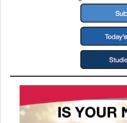































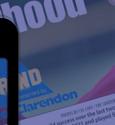


















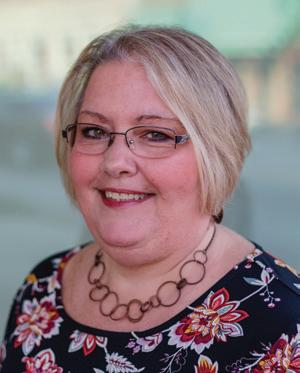
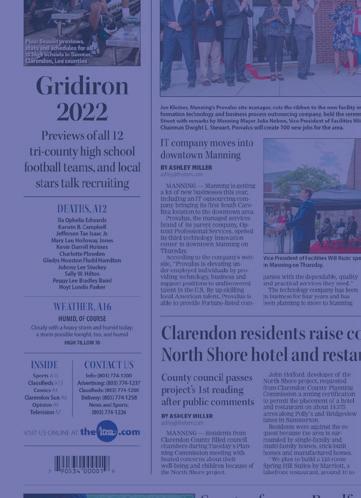


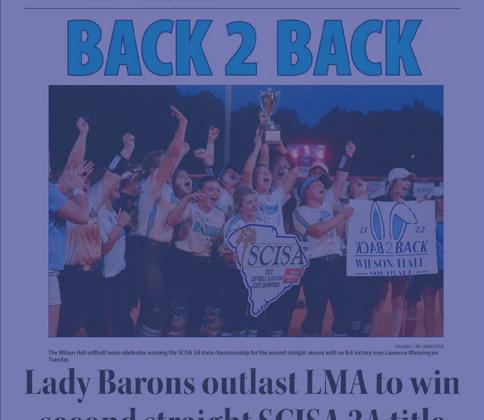




BY JOCELYN GECKER AP Education Writer
For her sixth-grade grade honors class, math teacher
Ana Sepúlveda wanted to make geometry fun. She figured her students “who live and breathe soccer” would be interested to learn how mathematical concepts apply to the sport. She asked ChatGPT for help.
Within seconds, the chatbot delivered a five-page lesson plan, even offering a theme: “Geometry is everywhere in soccer — on the field, in the ball, and even in the design of stadiums!”
It explained the place of shapes and angles on a soccer field. It suggested classroom conversation starters: Why are those shapes important to the game? It proposed a project for students to design their own soccer field or stadium using rulers and protractors.
“Using AI has been a game changer for me,” said Sepúlveda, who teaches at a dual language school in Dallas and has ChatGPT translate everything into Spanish. “It’s helping me with lesson planning, communicating with parents and increasing student engagement.”
Across the country, artificial intelligence tools are changing the teaching profession as educators use them to help write quizzes and worksheets, design lessons, assist with grading and reduce paperwork. By freeing up their time, many say the technology has made them better at their jobs.
A poll released this month by Gallup and the Walton Family Foundation found six in 10 U.S. teachers working in K-12 public schools used AI tools for their work over the past school year, with heavier use among high school educators and early-career teachers. It surveyed more than 2,000 teachers nationwide in April.
Respondents who use AI tools weekly estimate they save them about six hours a week, suggesting the technology could help alleviate teacher burnout, said Gallup research consultant Andrea Malek Ash, who authored the report.
States are issuing guidelines for using AI tools in classrooms.
As schools navigate concerns over student abuse of the technology, some are also are introducing guidelines and training for educators so teachers are aware of avoiding shortcuts that shortchange students.
About two dozen states have state-level AI guidance for schools, but the extent to which it is applied by schools and teachers is uneven, says Maya Israel, an associate professor of educational technology and computer science education at the University of Florida.
“We want to make sure that AI isn’t replacing the judgment of a teacher,” Israel said. If teachers are using chatbots for grading, they should be aware the tools are good for “low-level” grading like multiple choice tests but less effective when nuance is required. There should be a way for students to alert teachers if the grading is too harsh or inconsistent, and the final grading decision needs to remain with the educator, she said.
About 8 in 10 teachers who use AI tools say it saves them time on work tasks like making worksheets, assessments, quizzes or on
administrative work. And about 6 in 10 teachers who use AI tools said they are improving the quality of their work when it comes to modifying student materials, or giving student feedback.
“AI has transformed how I teach. It’s also transformed my weekends and given me a better work-life balance,” said Mary McCarthy, a high school social studies teacher in the Houston area who has used AI tools for help with lesson plans and other tasks.
McCarthy said training she received from her school district on AI tools has helped her model proper use for her students.
“If I’m on the soapbox of, ‘AI is bad and kids are going to get dumb,’ well yeah if we don’t teach them how to use the tool,” said McCarthy. “It feels like my responsibility as the adult in the room to help them figure out how to navigate this future.”
Teachers say the technology is best used sparingly.
Views on the role of artificial intelligence in education have shifted dramatically since ChatGPT launched in late 2022. Schools around the country initially banned it, but since then many have sought ways to incorporate it into classrooms. Concerns about student overuse and misuse are still prevalent: About half of teachers worry that student use of AI will decrease teens’ ability to think critically and independently or to have persistence when problem solving, according to the study.
One benefit teachers see in becoming more familiar with artificial intelligence is the ability to spot when students are overusing it.
Clues that assignments are written by AI tools include an absence of grammatical errors and complex phrases in writing, said Colorado high school English teacher Darren Barkett. He said he relies on ChatGPT himself to create lesson plans and grade multiple choice tests and essays.
In suburban Chicago, middle school art teacher
Lindsay Johnson said she uses only AI programs vetted by her school and deemed safe to use with minors, for data privacy and other concerns. To ensure students feel confident in their skills, she said she brings the technology in only for later stages of projects.
For her eighth-graders’ final assessment, Johnson asked them to make a portrait of an influential person in their lives. After students put final touches on their subject’s face, Johnson introduced generative AI for those who wanted help designing the background. She used an AI tool within Canva, after checking with her district’s IT department that the design software passed its privacy screener.
“As an art teacher, my goal is to let them know the different tools that are out there and to teach them how those tools work,” she said. Some students weren’t interested in the help. “Half the class said, ‘I’ve got a vision and am going to keep going with it.’”
The Associated Press’ education coverage receives financial support from multiple private foundations. AP is solely responsible for all content. Find AP’s standards for working with philanthropies, a list of supporters and funded coverage areas at AP.org.

Students and sleep are not always compatible. College students have long expressed a tendency to be night owls, but even school-aged youngsters may be reluctant to go to bed on time during the school year.
Parents of school-aged children know that bedtime can be challenging, particularly when moms and dads want to ensure their youngsters get the recommended number of hours of sleep each night.
The American Academy of Sleep Medicine advises school-aged children between the ages of 6 and 12 get nine to 12 hours of sleep per night, while teens are urged to sleep eight to 10 hours per night.
Studies have found that when students don’t get enough sleep on school nights, their academic performance is likely to suffer. A 2023 study of first-year college students led by researchers at Carnegie Mellon University and published in the Proceedings of the National Academy of Sciences found that negative outcomes began to accumulate when students received less than six hours of sleep
per night. Authors of the study noted that previous studies in animals showed that memories formed during the day were consolidated while animals slept but forgotten when those animals’ normal sleep patterns were interrupted. The researchers behind the study identified a notable decline in students’ grade point averages when they received less than six hours of sleep, suggesting humans’ ability to learn and remember what they’ve learned in a given day is compromised if they don’t get enough sleep that night.
School-aged youngsters typically get more than six hours of sleep per night, but if they’re falling short of AASM recommendations, those students’ academic performance could be adversely affected. With that in mind, parents can try various strategies to get children to bed on time.
• Stay consistent with bedtime. A firm bedtime can reduce the likelihood that sleep disruptions will affect how children perform in the classroom. If children are staying
up three hours past their weeknight bedtime on Friday and Saturday, then they’re less likely to want to go to bed on time on school nights. A little flexibility on the weekends might not upset the apple cart, but try to maintain a consistent bedtime throughout the week.
• Help kids calm down before bed. A winding down period leading up to bedtime can help kids fall asleep more quickly and might even make them less resistant to bedtime. Avoid particularly energetic activities directly before bedtime. Calmly reading a book and picking clothes out for the next day of school are calm activities that can get kids’ bodies ready for sleep.
• Avoid confrontation. Parents are urged to let it go if kids aren’t falling right asleep but are still being cooperative at bedtime. Kids might want to keep reading to themselves after Mom and Dad say goodnight, and that’s alright so long as children aren’t continually getting out of bed or getting riled up. Eventually kids will tire out when engaging in a calm, pre-sleep
activity, so parents should not grow upset and confront kids who are behaving but not falling asleep right away.
• Create a positive sleep environment. Young children will resist sleep if it sounds like their parents and siblings are having a grand old time without them. Parents typically go to great lengths to
ensure kids’ bedrooms are conducive to sleep, but it’s also important to maintain a peaceful setting throughout the rest of the house once children go to bed.
Sleep and school are inextricably linked, and parents can do much to ensure kids get the rest they need to do their best in the classroom.


The ‘Palmetto Pioneers’ initiative jump starts with a tribute to Mary McLeod Bethune, celebrating her legacy and inspiring future generations.
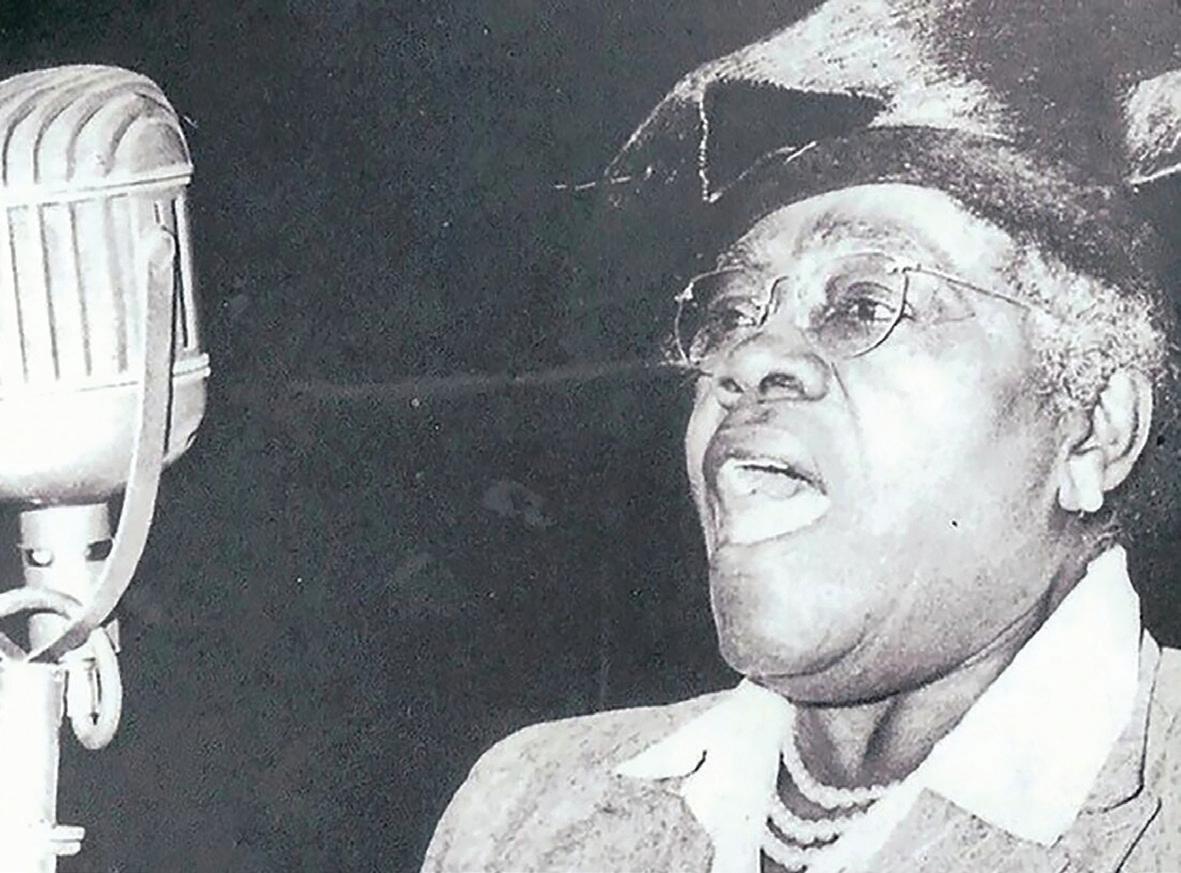
at Lincoln High School in 1918.

BY SCDE COMMUNICATIONS
MAYESVILLE — The stories of South Carolina heroes and history makers are coming to state classrooms, starting with the remarkable Mary McLeod Bethune, a trailblazing educator and civil rights leader.
State Superintendent of Education Ellen Weaver visited Bethune’s birthplace in Mayesville,South Carolina, earlier this month to celebrate Bethune’s 150th birthday. To help mark the special day, Weaver unveiled a new series of instructional materials that will shine the spotlight on remarkable South Carolinians like Bethune.
“Mary McLeod Bethune was an education entrepreneur who dared to dream of a better future. But she didn’t just dream; she acted – often at great personal risk and expense,” Weaver said. “Yet she persevered because she understood the power of education to change lives and open the world. She opened the doors of educational and employment opportunity for many, especially young African American women who had long been denied. Her story of achievement, determination and hope sets a pioneering example for South Carolina students to follow, today and for generations to come.”
Bethune is the first to be featured in the South Carolina Department of Education’s Palmetto Civics Project “Palmetto Pioneer” series. Designed to educate and inspire, these materials will be made available to educators in classrooms across our state, bringing to life for students the remarkable stories and legacies of groundbreaking South Carolinians. The goal is to foster a deeper appreciation for and knowledge of South Carolina’s rich heritage. This supplementary instructional material will be provided to schools at no cost.















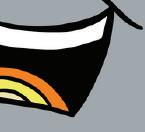










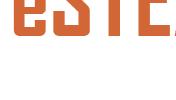





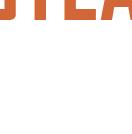



















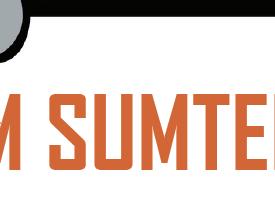


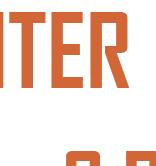






























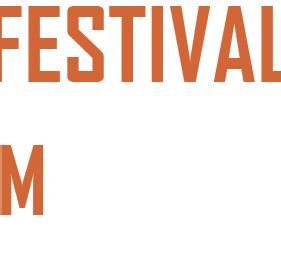

















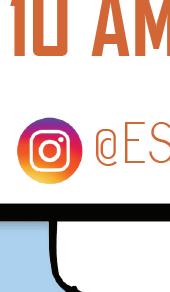
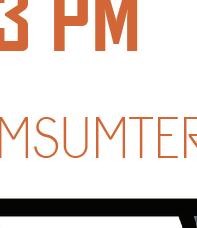





















































































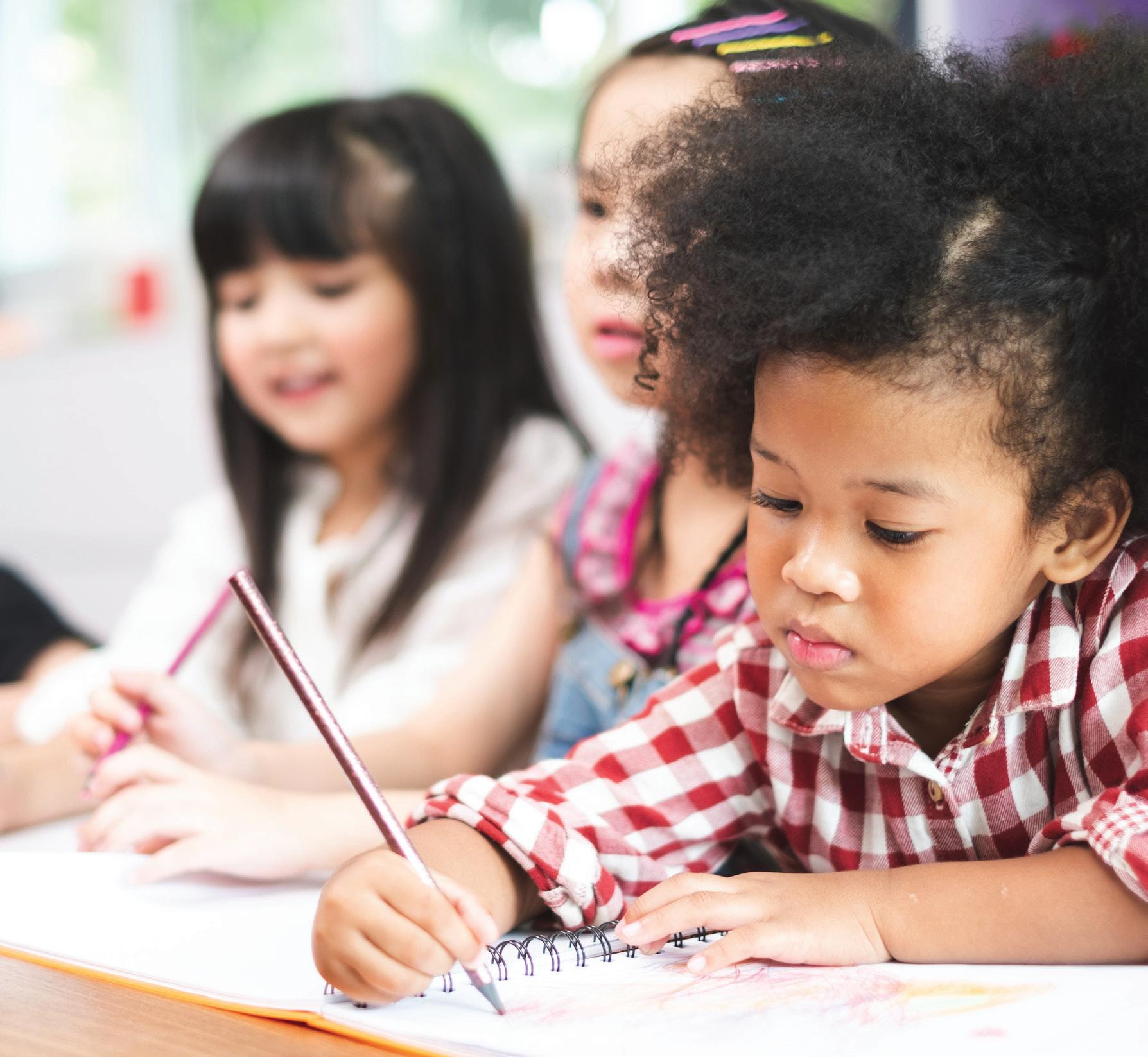
(Family Features) Learn -
ing to write is one of the defining milestones of early childhood, but it doesn’t happen all at once. Children build writing skills over time, from indecipherable scribbles to writing letters and words. While children progress at their own pace, families can help foster early writing development.
Lauren Loquasto, senior vice president and chief academic officer at The Goddard School, and Sonia Cabell, professor of reading education at Florida State University and member of The Goddard School’s Educational Advisory Board, provide this insight and guidance for families.
Early writing milestones
Writing begins in early toddlerhood, around 18-24 months. The earliest developmental milestone is when children scribble on paper with a crayon.
By 2-3 years old, children often draw shapes and narrate their writing. Parents should show genuine interest to help build confidence and interest. Ask your children to read what they write, as this helps make the connection that marks on paper represent thoughts and ideas. It’s not expected for children younger than 3 to write identifiable letters. Instead, encourage them to make marks on paper without constraint, allowing them to freely express themselves.
Around ages 3-5, children begin to move from writing (making marks) to handwriting, which is the formalized motion of making numerals and letters in recognizable forms. It’s vital for parents to value their children’s
writing no matter what appears on the paper and provide opportunities for them to regularly engage in writing. Children at this age tend to write letters in different ways. It’s common, for example, for letters to appear backwards or from right to left. These are not causes for concern; this is a natural part of the development process.
Writing supports reading (and vice versa) Reading and writing skills develop in tandem, reinforcing each other. Through writing, children experiment with how written language works, learning English moves from left to right and top to bottom. By estimating spelling – using their knowledge of letter shapes and sounds to attempt to write words – they are beginning to break the code of reading. Moreover, when children are composing stories, they are supporting comprehension and oral language growth, which are critical for reading development.
Encourage writing at home
Make writing part of everyday life. While ensuring paper and writing utensils are accessible is a start, materials alone won’t spontaneously create writing experiences. Children naturally want to engage with things they see, so parents and older siblings should serve as writing models. For example, when writing a grocery list, ask your children to write their own lists. When you’re writing a thank-you note, have them write their own.
The development of fine motor skills is also essential. One way to do this is provide


tools like chopsticks or tongs that require them to use their forefinger and thumb in a pinching motion; this strengthens the hand muscles that are used to write. Also encourage play with small toys like blocks or beads that engage the hands in different ways. As fine motor skills improve, it becomes easier to grip writing utensils and write for extended periods.
Writing tools From apps to workbooks, countless tools and resources tout their ability to help children learn to write. Be wary. Typing on a tablet or computer is no substitute for learning to write by hand. Multiple studies have shown that writing – not typing – better promotes cognitive and literacy development. Avoid activities like workbooks that require repetitive writing of letters over and over, as this inhibits creativity and experimentation. These activities can cause children to fear making mistakes, which can lead to anxiety, frustration and a loss of interest. The best tools are often the simplest: a small writing utensil (not big or bulky; children have small hands and need appropriately sized utensils) and a blank piece of paper.
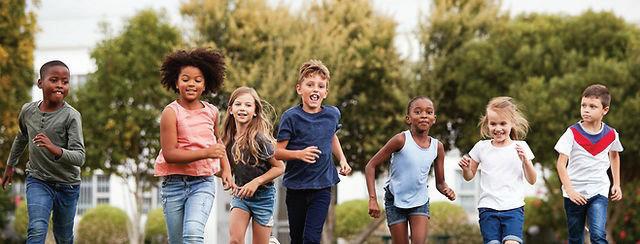
Remember, children develop at their own pace. Provide encouragement and focus on effort, not perfection.
To watch a writing webinar featuring Loquasto and Cabell and access additional parenting resources, visit the Parent Resource Center at GoddardSchool. com.





